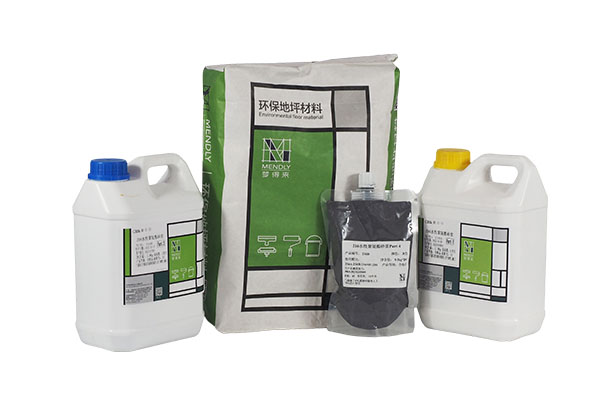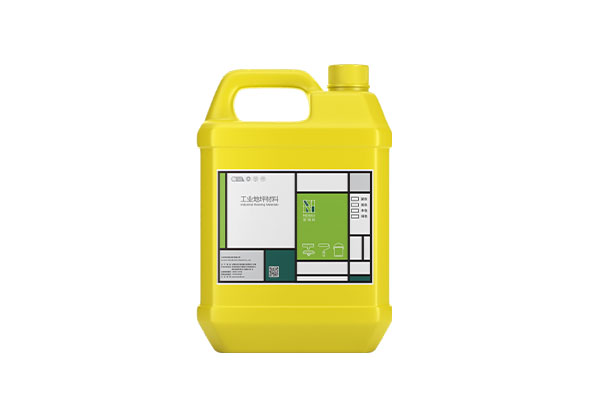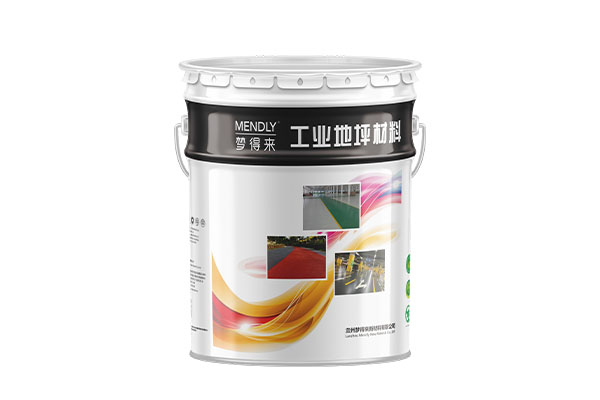How is the chemical corrosion resistance of solvent-free epoxy topcoat reflected?
Release Time : 2025-05-26
The chemical corrosion resistance of solvent-free epoxy topcoat is one of its core performance advantages. This characteristic stems from the molecular structure, composition and compactness of the material itself after film formation. It can show stable corrosion resistance in a variety of chemical environments and is suitable for industrial scenarios and special environments with strict requirements for corrosion resistance.
From the molecular structure level, solvent-free epoxy topcoat uses epoxy resin as the main film-forming substance, and its molecular chain contains a large number of polar groups such as hydroxyl, ether bond and epoxy group. These polar groups form a strong adhesion between the paint film and the substrate. At the same time, the molecular chains form a three-dimensional network structure through cross-linking reaction. This tight network structure is like a solid barrier that can effectively block the penetration of chemical media. When corrosive substances (such as acids, alkalis, salt solutions, etc.) come into contact with the coating surface, the dense molecular network will significantly delay or even prevent the diffusion of corrosive media to the substrate, thereby protecting the substrate from erosion.
The choice of curing agent in the formula plays a key role in chemical corrosion resistance. Solvent-free epoxy topcoat usually uses high-performance curing agents, which can further optimize the chemical stability of the paint film when cross-linking with epoxy resin. For example, the chemical bonds formed by some amine curing agents after cross-linking have strong hydrolysis resistance and can resist long-term erosion by aqueous solutions; while acid anhydride curing agents can improve the tolerance of the paint film to strong corrosive media such as acids and alkalis. The matching of different types of curing agents and epoxy resins enables the coating to show targeted corrosion resistance advantages when facing specific chemical environments and meet diverse usage requirements.
The density of the coating after film formation is an important guarantee for chemical corrosion resistance. Since solvent-free epoxy topcoat does not contain solvents, no pores or defects will be generated due to solvent volatilization during the construction process. The paint film formed after curing has a uniform structure and extremely high density. This dense coating has almost no channels for chemical media to penetrate, and even if it is exposed to corrosive liquids for a long time, it can effectively prevent them from penetrating into the surface of the substrate. For example, in chemical workshops, laboratories and other places, when acid and alkali solutions are accidentally spilled on the ground, the dense solvent-free epoxy topcoat coating can temporarily block it on the surface, providing sufficient time for timely cleaning and avoiding direct contact between the corrosive medium and the concrete substrate.
Acid corrosion resistance is reflected in the tolerance to acid solutions of different concentrations. Solvent-free epoxy topcoat coating can resist the erosion of a variety of inorganic and organic acids, such as dilute sulfuric acid, hydrochloric acid, phosphoric acid and acetic acid. Under normal temperature conditions, the coating has long-term tolerance to low-concentration acid solutions, and will not swell, discolor, or fall off; for higher-concentration acid solutions, the coating can still maintain complete protective performance after timely cleaning after a short period of contact. This acid-resistant property makes it widely used in industrial fields with strong acidic environments such as fertilizer production and non-ferrous metal processing, effectively extending the service life of the ground.
Alkali corrosion resistance is the protective embodiment of solvent-free epoxy topcoat in alkaline environments. Alkaline substances (such as sodium hydroxide and potassium hydroxide solutions) are highly corrosive to many materials, but the solvent-free epoxy topcoat coating can withstand the long-term effects of moderately concentrated alkaline solutions. In alkaline environments such as some paper mills and textile printing and dyeing workshops, the ground is often exposed to alkaline slurries or cleaning fluids. The solvent-free epoxy topcoat coating prevents the penetration and erosion of hydroxide ions through a stable chemical structure, maintains the integrity and adhesion of the coating, and avoids coating peeling and substrate damage caused by alkaline corrosion.
Salt corrosion resistance is mainly reflected in the resistance to salt solutions and humid salt spray environments. In coastal areas or food processing, marine engineering and other fields, the ground is susceptible to salt spray erosion or salt solution pollution. The solvent-free epoxy topcoat coating can effectively block the penetration of salt substances such as sodium chloride and magnesium chloride, and prevent coating cracking and substrate corrosion caused by salt crystal expansion. At the same time, in a humid environment, the density of the coating can also inhibit the occurrence of electrochemical corrosion, avoid the metal substrate from contacting with the salt solution to form a corrosion cell, and thus provide reliable protection for the ground in a complex salt corrosion environment.
The chemical corrosion resistance of solvent-free epoxy topcoat is the result of the combined effect of many factors such as molecular structure, curing system, and coating density. Its stable performance in different chemical media such as acid, alkali, and salt makes it an ideal choice for industrial floors, warehousing and logistics, laboratories, and other scenes with strict requirements for corrosion resistance. Through the reasonable selection of formulas and construction processes, solvent-free epoxy topcoat can provide long-lasting and reliable chemical protection for the ground, reduce maintenance costs and safety hazards caused by corrosion, and reflect significant practical value and performance advantages.







